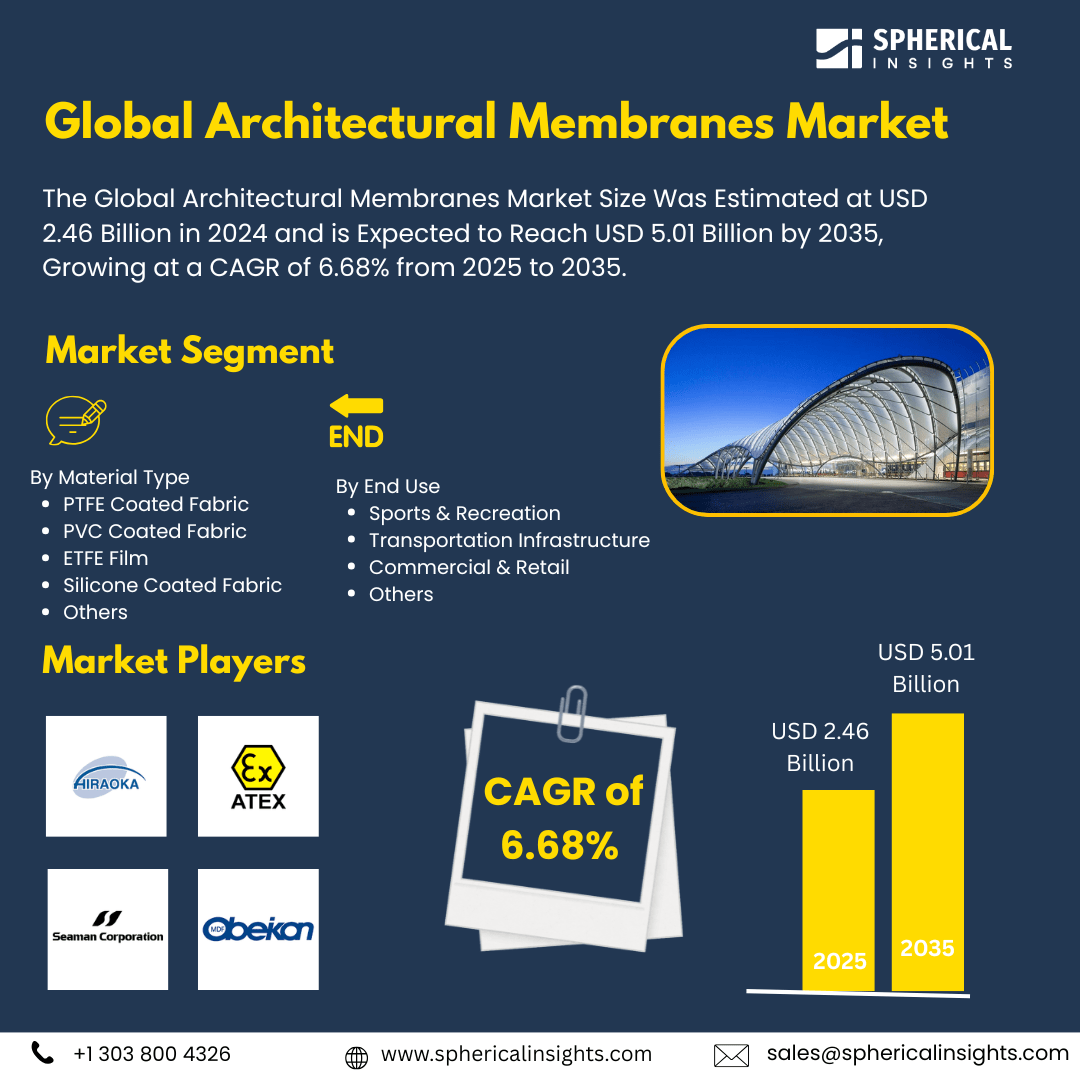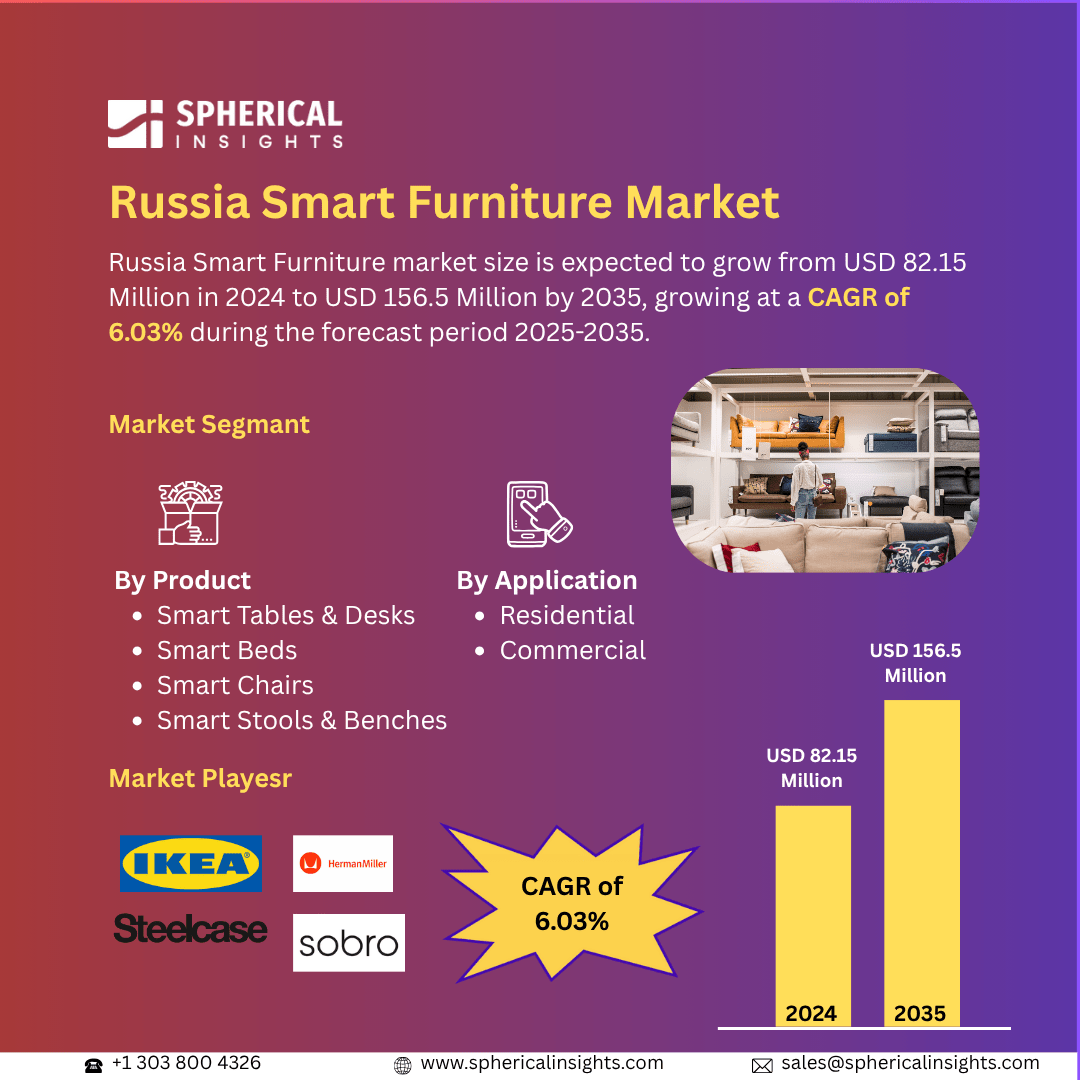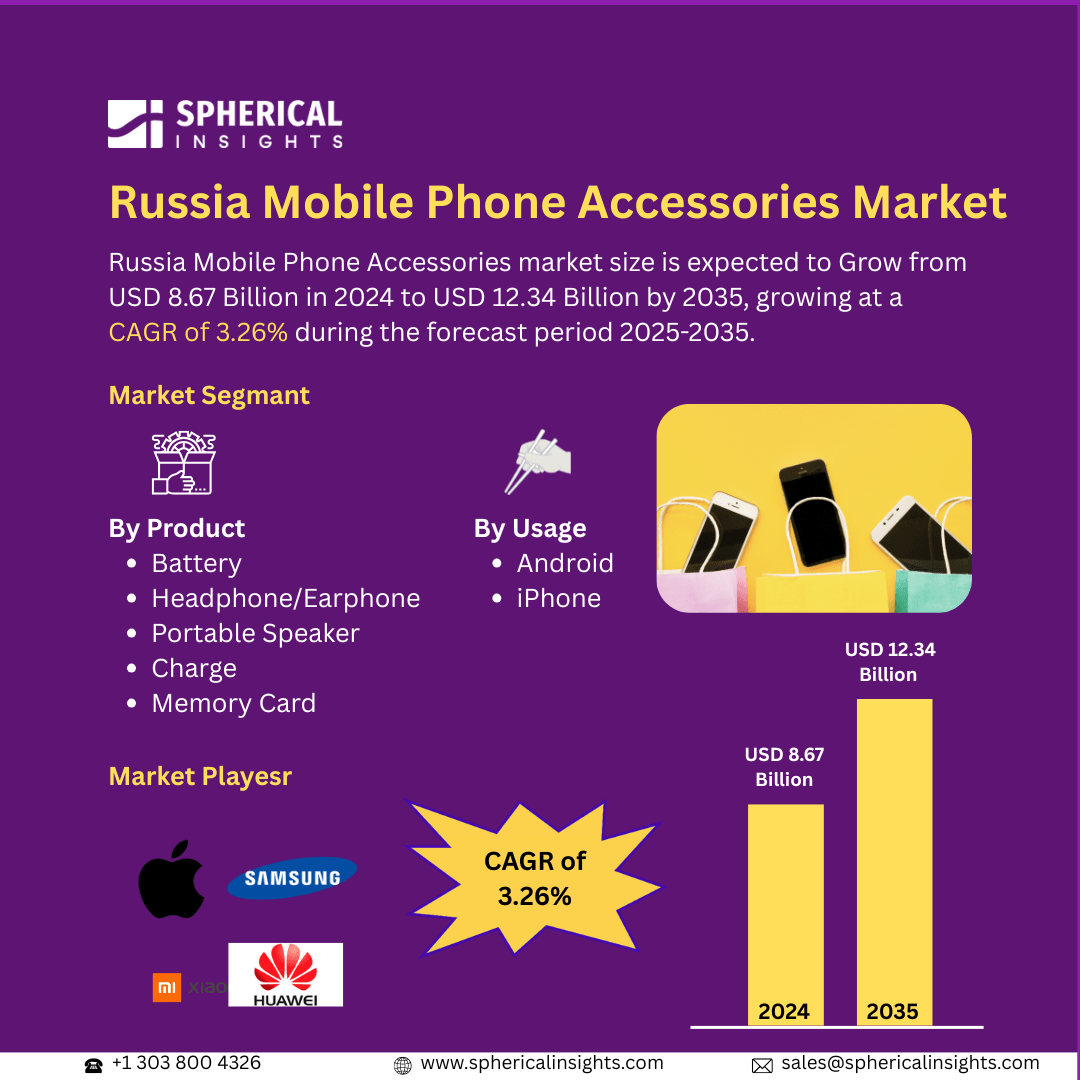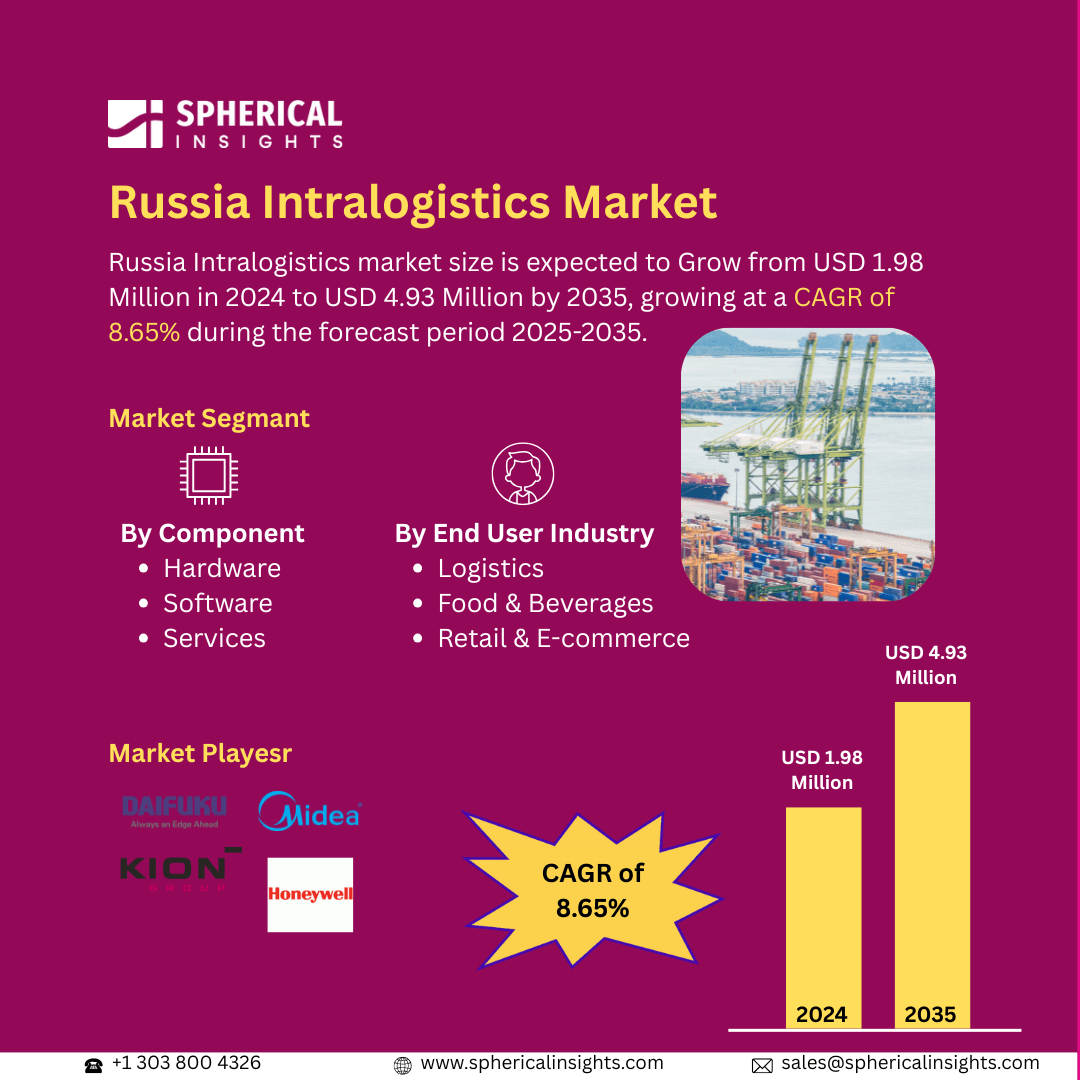Architectural Membranes Market Summary
The Global Architectural Membranes Market Size Was Estimated at USD 2.46 Billion in 2024 and is Expected to Reach USD 5.01 Billion by 2035, Growing at a CAGR of 6.68% from 2025 to 2035. The market for architectural membranes is expanding as a result of growing infrastructure investments, the need for creative and sustainable building solutions, and the desire for visually appealing, lightweight, and flexible structures.
Key Regional and Segment-Wise Insights
- In 2024, Asia Pacific held the largest revenue share of over 32.72% and dominated the market globally.
- In 2024, the PTFE-coated fabric segment had the highest market share by material type, accounting for 34.72%.
- In 2024, the sports and recreation segment had the biggest market share by end use, accounting for 40.3%.
Global Market Forecast and Revenue Outlook
- 2024 Market Size: USD 2.46 Billion
- 2035 Projected Market Size: USD 5.01 Billion
- CAGR (2025-2035): 6.68%
- Asia Pacific: Largest market in 2024
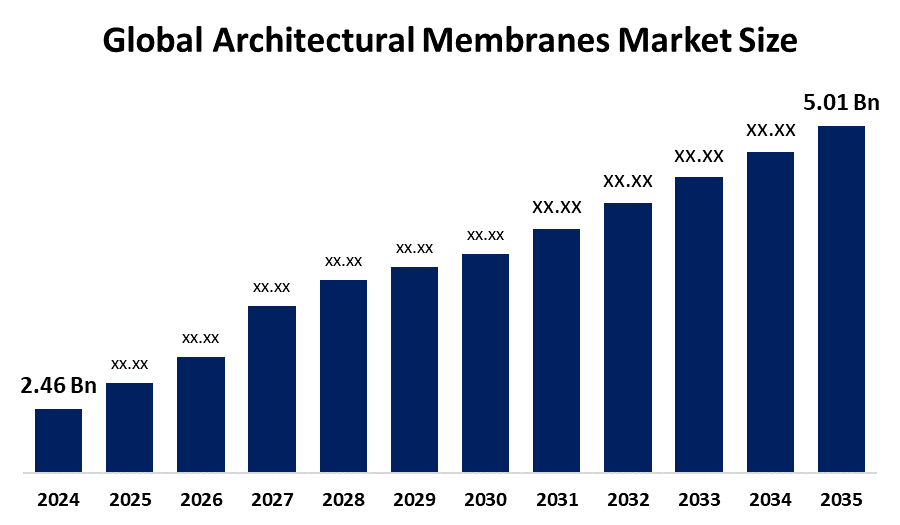
The Architectural Membrane Market Size operates within the construction and architectural sector, which applies lightweight high-performance membranes such as PTFE, PVC, and ETFE for roofing and façade structures and shading solutions. These membranes are the preferred choice for large-span structures, including stadiums, airports, and commercial buildings, because they deliver cost-effectiveness as well as durability alongside UV protection and aesthetic appeal. The market expansion occurs because of rapid urbanization, together with rising global infrastructure development investments and growing demand for sustainable building solutions. The growing use of architectural membranes receives significant support from the demand for eco-friendly building materials alongside the rising popularity of tensile and modular architectural design practices.
The advancement in material engineering technology has enhanced architectural membranes' strength, together with their transparency and self-cleaning features, which now extend their lifespan and broaden their application possibilities. Innovations such as solar-integrated ETFE sheets and nanotechnology-based coatings transform building envelope solutions. The industry growth rate accelerates because regional governments implement green building standards and provide energy-efficient building techniques. Advanced membrane technologies find growing adoption in contemporary architectural projects globally because of LEED certification, along with smart city initiatives and infrastructure development plans.
Material Type Insights
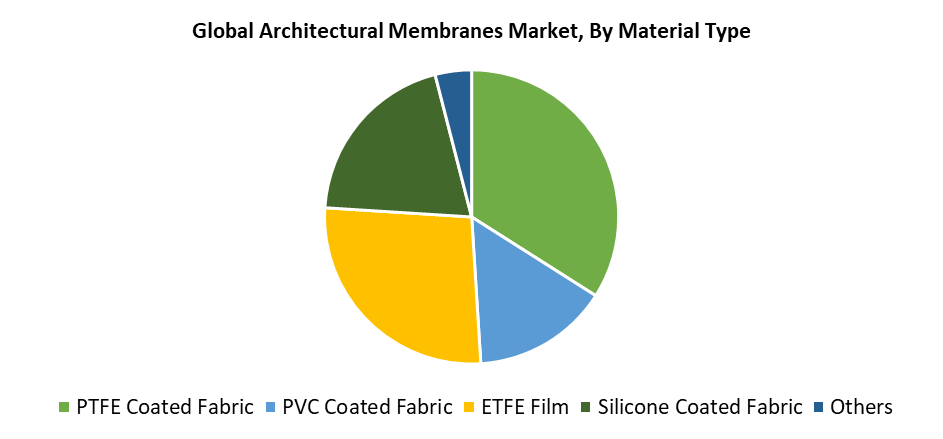
The PTFE-coated fabric segment held the highest revenue share of 34.72% and led the architectural membranes market. The material achieved market dominance through its exceptional properties, including long-lasting durability, combined with high tensile strength and resistance to chemical attacks, UV radiation, along temperature extremes. Large-span structures, including stadiums and airports, and exposition halls, benefit from PTFE (polytetrafluoroethylene) coatings because they provide long-lasting performance with minimal maintenance needs. Modern architectural designs widely utilize this fabric because its self-cleaning and non-stick surface reduces cleaning expenses while enhancing visual appeal. The broad use of PTFE-coated fabrics across different countries stems from their complete recyclability and support for sustainable building practices, which match international green building programs.
During the forecast period, the ETFE film segment is expected to experience the fastest CAGR due to its unique combination of lightweight construction, transparency, and durability. Because of its exceptional light transmission, ETFE (ethylene tetrafluoroethylene) is perfect for buildings that need natural light, such as greenhouses, sports arenas, and atriums. The material guarantees extended durability with minimal upkeep through its excellent protection from UV radiation and environmental wear, and severe weather conditions. The recyclable nature of ETFE films supports sustainable building goals, which matches the rising worldwide interest in eco-friendly building substances. The current popularity of ETFE in modern energy-efficient architectural projects stems from technological progress in multi-layered ETFE cushions and solar integration features.
End Use Insights
The sports and recreation sector held the highest market share of 40.3% within the architectural membranes industry. Tensile membrane constructions dominate this market because they serve as the primary construction solution for sports facilities, including arenas, stadiums, and gyms. Architectural membranes enable large span coverage without internal supports, which creates open viewing spaces and multiple design possibilities that are vital for sports and leisure facilities. The lightweight composition of architectural membranes, combined with their adaptable design and weather-resistant nature, makes them suitable for both permanent and temporary structures. The worldwide investment expansion in sports infrastructure, together with international event planning and rising interest in indoor and outdoor recreational activities, drives the demand for membrane-based architectural solutions in this market.
The transportation infrastructure segment is expected to experience the fastest CAGR through the forecast period. The worldwide growth of public transportation facilities with requirements for lightweight yet sturdy and visually appealing constructions drives investments into bus terminals and train stations, airports, and other transit hubs. Architectural membranes serve as ideal solutions for transit hub roofing and shading systems because they install quickly and enable natural light transmission while enduring various weather conditions. Architectural membranes offer flexible design capabilities together with energy-efficient attributes that match the increasing demand for modern sustainable infrastructure systems. Government initiatives focusing on transportation network development have accelerated the adoption of membrane structures within this swiftly expanding end-use sector.
Regional Insights
The Asia Pacific architectural membranes market achieved the leading position globally by accumulating the highest revenue share of 32.72%. The dominant position of the Asia Pacific architectural membranes market stems from rapid urbanization and population expansion, and substantial infrastructure funding in China, along with India, Japan, and Southeast Asia. Large-scale construction projects throughout the region, including stadiums, airports, commercial complexes, and transportation hubs, use architectural membranes increasingly because of their low prices and visual appeal, and structural flexibility. Government initiatives promoting sustainable urban growth, together with green construction techniques, also drive market demand. The region's market success is supported by vital industry manufacturers, together with an increasing understanding of modern construction materials.
North America Architectural Membranes Market Trends
Architectural membrane demand in North America is expected to grow at a significant CAGR throughout the forecast period because of building material requirements for environmental care and energy efficiency. The rising number of commercial buildings, sports facilities, and transportation infrastructure repair and modernization projects in the region utilizes architectural membranes for their functional and visual advantages. The diverse North American climates find architectural membranes suitable because they enhance daylighting while consuming minimal energy and withstanding harsh weather conditions. The growth of membrane-based structures receives additional support from strong governmental backing for LEED certification and other green building standards. The market expansion in this region occurs due to both established manufacturers operating there and increased requirements for innovative, adaptable design solutions.
Europe Architectural Membranes Market Trends
The market for architectural membranes in Europe will grow at a substantial rate because of environmental regulations, together with increased attention to sustainable construction methods. The adoption of environmentally friendly building materials finds its leading position in Germany and France, and the United Kingdom. The popularity of architectural membranes increases because they deliver energy efficiency and recyclability along with modern aesthetic attributes. Membrane structures experience growing demand since the developed infrastructure sector of the region combines with rising restoration initiatives, public facilities, sports venues, and transportation hubs investments. Membrane materials prove beneficial for Europe because the continent leads in green building certifications and promotes low-carbon development. The market expansion in this region derives from continuous technological progress, together with increasing architectural applications of ETFE and PTFE textiles.
Key Architectural Membranes Companies:
The following are the leading companies in the architectural membranes market. These companies collectively hold the largest market share and dictate industry trends.
- Hiraoka
- Atex Membrane
- ObeiKan
- Seaman Corp
- Saint-Gobain
- Sika
- Taconic-AFD
- Kobond
- Chukoh Chem
- Others
Recent Developments
- In January 2023, SPACECOOL INC. formally introduced SPACECOOL, a revolutionary membrane material that integrates its in-house radiative cooling technology. The market for architectural membranes has advanced significantly as a result of this invention, especially when considering energy efficiency and sustainability.
Market Segment
This study forecasts revenue at global, regional, and country levels from 2020 to 2035. Spherical Insights has segmented the architectural membranes market based on the below-mentioned segments:
Global Architectural Membranes Market, By Material Type
- PTFE Coated Fabric
- PVC Coated Fabric
- ETFE Film
- Silicone Coated Fabric
- Others
Global Architectural Membranes Market, By End Use
- Sports & Recreation
- Transportation Infrastructure
- Commercial & Retail
- Others
Global Architectural Membranes Market, By Regional Analysis
- North America
- Europe
- Germany
- UK
- France
- Italy
- Spain
- Russia
- Rest of Europe
- Asia Pacific
- China
- Japan
- India
- South Korea
- Australia
- Rest of Asia Pacific
- South America
- Brazil
- Argentina
- Rest of South America
- Middle East & Africa
- UAE
- Saudi Arabia
- Qatar
- South Africa
- Rest of the Middle East & Africa
